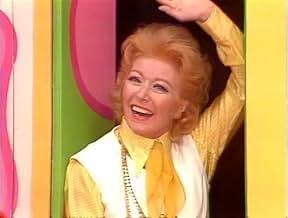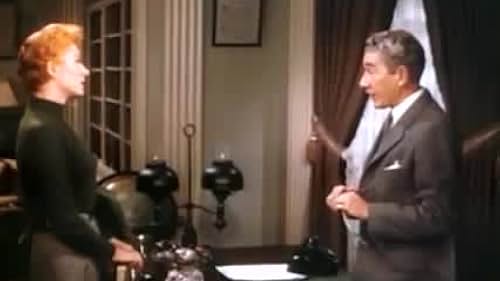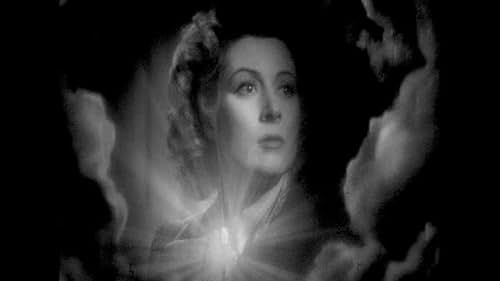Greer Garson(1904-1996)
- Actress
- Additional Crew
- Soundtrack
Eileen Evelyn Greer Garson was born on September 29, 1904 in London, England, to Nancy Sophia (Greer) and George Garson, a commercial clerk. Of Scottish and Ulster-Scots descent, Garson displayed no early interest in becoming an actress. Educated at the
University of London intending to become a teacher, she opted instead to take a job at an advertising agency. During her off hours she appeared in local theatrical productions, gaining a reputation as an extremely talented and charismatic performer. During a stage production of "Old Music," Garson was offered a studio contract by MGM Vice President of Production Louis B. Mayer while he was on a visit to London looking for new talent. Garson's very first film under that arrangement was the immensely popular Goodbye, Mr. Chips (1939), earning her an Academy Award nomination for Best Actress - the first of six she would receive. The following year would see Greer in the highly acclaimed Pride and Prejudice (1940) as "Elizabeth Bennet". 1941 saw her earn a second nomination for her role as Edna Gladney in Blossoms in the Dust (1941), but it was the moving, if propagandist, Mrs. Miniver (1942), in a role that she would forever be known by, that actually brought her the Oscar statuette as Best Actress.
As Marie Curie in Madame Curie (1943), she would draw yet another nomination, and the same the next year in Mrs. Parkington (1944). It began to seem that any movie she was part of would be an automatic success. Sure enough, in 1945, she won yet another nomination, for her role as "Mary Rafferty" in The Valley of Decision (1945). Still, Garson began to chafe at the unbroken stream of "noble woman" roles in which the studio was casting her. MGM felt that they had an winning formula and saw no compelling reason to alter it. Two standard seven-year contract extensions kept her at MGM until 1954 when, by mutual consent, she left the only studio she had ever known. In 1946, Greer appeared in Adventure (1945), which was a flop at the box-office. 1947's Desire Me (1947) was no less a disaster, downward spiral finally arrested with the hit That Forsyte Woman (1949). The next year, she reprised her role as "Kay Miniver" in The Miniver Story (1950), though audiences were unsurprisingly put off by her character's untimely demise from cancer, leaving screen husband Walter Pidgeon to soldier on alone.
For the remainder of the 1950s, she endured several predictably unappreciated films. Then, 1960 found her cast in the role of Eleanor Roosevelt in Sunrise at Campobello (1960). This film was, perhaps, her finest work and landed her seventh and final Academy Award nomination. Her final screen appearances were in The Singing Nun (1966) as "Mother Prioress" and The Happiest Millionaire (1967). After a few TV movies, Garson retired to the New Mexico ranch she shared with her husband, millionaire Buddy E.E. Fogelson. She concentrated on the environment and other various charities. By the 1980s, she was suffering from chronic heart problems, prompting her to slow down. That was the cause of her death on April 6, 1996 in Dallas, Texas, at age 91.
As Marie Curie in Madame Curie (1943), she would draw yet another nomination, and the same the next year in Mrs. Parkington (1944). It began to seem that any movie she was part of would be an automatic success. Sure enough, in 1945, she won yet another nomination, for her role as "Mary Rafferty" in The Valley of Decision (1945). Still, Garson began to chafe at the unbroken stream of "noble woman" roles in which the studio was casting her. MGM felt that they had an winning formula and saw no compelling reason to alter it. Two standard seven-year contract extensions kept her at MGM until 1954 when, by mutual consent, she left the only studio she had ever known. In 1946, Greer appeared in Adventure (1945), which was a flop at the box-office. 1947's Desire Me (1947) was no less a disaster, downward spiral finally arrested with the hit That Forsyte Woman (1949). The next year, she reprised her role as "Kay Miniver" in The Miniver Story (1950), though audiences were unsurprisingly put off by her character's untimely demise from cancer, leaving screen husband Walter Pidgeon to soldier on alone.
For the remainder of the 1950s, she endured several predictably unappreciated films. Then, 1960 found her cast in the role of Eleanor Roosevelt in Sunrise at Campobello (1960). This film was, perhaps, her finest work and landed her seventh and final Academy Award nomination. Her final screen appearances were in The Singing Nun (1966) as "Mother Prioress" and The Happiest Millionaire (1967). After a few TV movies, Garson retired to the New Mexico ranch she shared with her husband, millionaire Buddy E.E. Fogelson. She concentrated on the environment and other various charities. By the 1980s, she was suffering from chronic heart problems, prompting her to slow down. That was the cause of her death on April 6, 1996 in Dallas, Texas, at age 91.











































